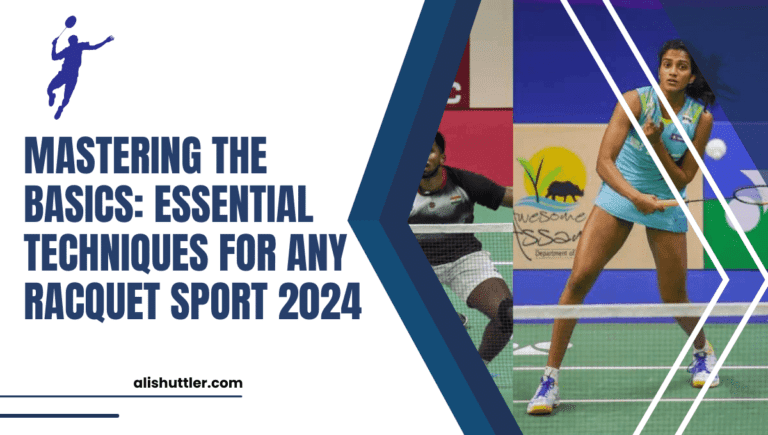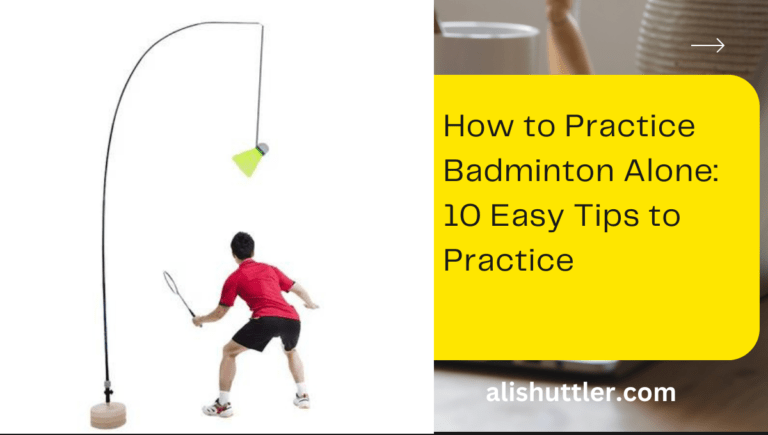Badminton strategies for competitive play involve several key elements, including smart shot selection, powerful footwork, and fast decision-making in rallies. Players frequently intersperse fast drives, deep clears, and soft drop shots to confuse their opponents.
In doubles play, teams employ set plays and signals to protect the net and score. They tend to emphasize moving your opponent around the court to make errors.
The following sections illustrate how these strategies play out in actual matches.
Foundational Tactics
Foundational tactics construct the foundation for competitive badminton. Fundamental tactics are incisive positioning, open squad play, intelligent shot selection and dominating the middle of the court to maintain both defense and offense.
- Be nimble and centered, poised to spring every which way.
- Stand at court center between points to cut off angles.
- Keep your racket up and handle loose for rapid transitions.
- Observe both the shuttle and your opponent’s posture for signs.
- Use short, simple cues if doubles (“yours,” “mine,” “up,” “back”).
1. Singles Play
A powerful baseline game allows you to direct play and establish the rhythm for every point. By striking deep, flat clears you push your opponent to the rear, giving you room and a moment to setup your next shot. When you combine that with cross-court or straight drop shots you have them running up quickly.
This change of tempo frequently confuses them, creating gaps for your assault. Serving is your initial opportunity to take command. Vary short serves around the net and deep, high serves at the back corners. This makes it difficult for your opponent to anticipate and respond.
Observe how they stand and hold their racket prior to your serve; they tend to reveal tips on what they’re up to. Outsmart their returns by analyzing their body language and racket preparation. This reduces response time and allows you to choose smarter shots.
2. Doubles Play
Court coverage in doubles relies on both players functioning as a single unit. Side-by-side defense covers smashes, while front-back formations work best for attack. Every player has to understand when to push up or sag back, so spaces don’t develop.
Simple, fast calls like “mine” or “switch” reduce confusion and minimize fumbles. Net play in doubles is quick. Fast hands enable you to drop kick the shuttle or smash it beyond your opponents.
Attempt to smash any short ball or weak volley back at the net to keep them under duress.
3. Shot Selection
Fit the shot to the circumstance. If your opponent is deep, a tight drop can drag them in. When they’re off-balance, a smash can take the point. Mess around with clears, drops, lifts, and drives to keep things interesting.
Vary your shot angles and speeds to keep them guessing. Observe your adversary’s position. Target open areas, such as their backhand or deep corners.
Hit shuttles near lines but inside court. Practice picks at vulnerabilities and induces errors.
4. Court Control
Court control is the sign of a superior player. Good footwork allows you to get to difficult shots and get back in position for the next. Drive your opponent to the sidelines, deep corners, or front-to-back to exhaust them.
The more you make them run around, the less time they have to assault. To the extent possible, always attempt to return serves to their weaker side. Hit it to their backhand; many players can’t hit a backhand.
Be smart. Return to the middle after every shot.
5. Pace Variation
Nothing keeps your opponent off-balance better than changes of pace. Alternate rapid fire exchanges with slow, floating shots to disrupt their tempo. A slow drop into a powerful smash can surprise them.
See how they cover each pace. If they stumble on slow shots, go with more. If they charge fast, combine with slow stuff to induce errors.
Deciphering Opponents
Victory in competitive badminton is about more than rapid strokes or powerful smashes. It’s about understanding your adversary. A player who reads the game can identify tendencies, target vulnerabilities, and select the optimal plays at the optimal moments. If you’re interested in deciphering your opponents’ playstyle, players can modify their own style to gain an advantage.
The bullets below parse out how to identify and exploit these signs pre-match and in-match.
Pre-Match
Review previous matches to identify what makes your adversary tick. Observe if they forehand attack, or if they are good on the backhand defense. Some players wuss out and go with the same shots under pressure. See if your opponent has a preferred serve or likes to jump to the net after a drop.
This provides you hints regarding their tendencies and safe havens. Strategize accordingly what you’ve observed. For instance, if your adversary throws frequent cross-court drops, prepare yourself to protect the front corners. If they’re slow to recover after a smash, push the next shot deep to the backline!
Select serves & returns that force your opponent to move in a manner they hate. This plan should remain straightforward yet adaptable.
In-Match
Switch your game if the strategy isn’t functioning. If you see your opponent beginning to read your lifts or blocks, randomize your shots. Go for a flick serve if they anticipate a short. If they smash to the net, lob to the back court.
Watch for subtle shifts, like when they begin to lean to one side or lag behind between points. Pay close attention to your opponent’s motion when fatigued or nervous. Do they scowl, moan, or slow down their service? Body language reveals when your opponent is starting to lose concentration or confidence.
If they appear frustrated, hang in for extended rallies to exhaust them. Remain composed yourself, even if points go against you. A clear head lets you identify new opportunities and select the optimal shot in a crunch.
Warm-Up Observation
Use warm-up time to identify strengths and weaknesses. If your opponent has trouble with high clears or net kills – remember that! Now, take some shots to different corners and observe their footwork and balance during warm-ups.
This speedy reconnaissance can provide a clue as to what to aim for when the bout commences.
Setting Match Goals
Enter the match with some defined objectives. Maybe it’s to induce more backhands or to take points at the net. They keep you focused, help track progress, and help push you to stick with your plan if things get hard.
Advanced Footwork
Proper footwork is fundamental to powerful badminton. It maintain you in the correct place, conserve energetic and make each shot rely. High level players require more than speed, they require control, balance and intelligent movement decisions.
Drills added to everyday practice can grow these habits. Here’s a table of a few key techniques and drills for improved footwork.
| Technique | Drill Example | Purpose |
|---|---|---|
| Lateral Shuffle | Side-to-side cone shuffle | Improve lateral movement |
| Split Step | Split step with shadow shots | Quicker starts |
| Forward Lunge | Lunge to net and back | Net approach, balance |
| Backward Recovery | Backpedal from baseline | Fast resets |
| Diagonal Crossover | Diagonal run to rear court | Angle coverage |
| Shadowing | Full-court shadow play | Pattern memory |
Efficiency
Good footwork is utilizing only the steps you require. The less you roam, the more energy you save for those long rallies. Knowing when to deploy a shuffle, lunge or quick pivot for each shot keeps you one step ahead.
For instance, deep lunges for net kills but split steps for smashes. Watch footage of your matches to identify wasted motion or slow coverage. This allows you to focus on the problem areas, rather than speculate where things break down.
Seamless attack/defense transitions, such as transitioning from a jump smash back to base, can really set you apart.
Explosiveness
Speed off the mark and quick stops enable you to reach more shuttles. Plyometric moves—like squat jumps or box jumps—train your legs to spring quicker. These quick side shuffles and sprint starts develop this type of power.
Work on vertical jumps by leaping for high clears with both feet, then flipping back into your base stance. Concentrate on drills in which you respond to a random cue, compelling you to instantly accelerate in any direction.
This type of training can be the difference in chasing down a deep corner drive or cutting off a blistering drop shot.
Balance and Shot Accuracy
Remaining balanced on your shots keeps your returns crisp and controlled. Practice lunges with an emphasis on landing soft and steady. Taking shadow swings, while holding your finish, can expose if you’re off-balance.
Shadowing drills, when you move as if playing a match, but with no shuttle, help build muscle memory for each pattern. Lay markers on court and follow the same footwork routes as in actual play.
Going over these drills again and again conditions your body to make the right moves, so when you’re in the game you’ll play instinctually, without thinking about your feet.
Lateral and Directional Drills
Lateral movement drills, such as quick shuffles down the baseline, develop your lateral speed. Fast pivots and direction changes, repeated on marked spots, condition you to turn from backcourt to net instantly.
These drills are crucial for both singles and doubles. Short cone drills translate well for foot speed. Throw these into your warm-ups to accelerate reaction time.
Change directions quickly, maintain your balance, and always return to home.
Deceptive Play
In fierce badminton competitions, the margin of victory is often a result of deceptive play. Deceptive play can disrupt your opponent’s timing and open up room for effortless points. By deceptive intent, you compel errors and keep your adversary stovepiping.
Disguise
Something else that’s key is masking your shot preparation. Keep your racket grip look the same for different shots. For instance, a net lift and a tight net shot can begin with the identical movement. That makes it difficult for your adversary to anticipate what’s next.
Body language and eye contact really sold your cheat. Look one way, but launch the shuttle in the other. Little adjustments to your posture or wrist angle can make a world of difference. Don’t flaunt your scheme too early.
A few players even roll their eyes at the last moment to distract from the actual point. Grip changes provide an additional dimension. A loose grip can transition to a firm grip immediately before you strike the shuttle, allowing you to alternate between a drop and clear on the same approach.
Stances count as well. A wider stance can indicate a smash, but a wrist flick can make it a drop. Timing is the missing piece. Wait until the last possible moment to switch your shot, so your opponent cannot react. Work on this with drills emphasizing body movement as a whole.
Misdirection
Misdirection gets your opponent out of position. Take shots that appear to be going one direction but then go in a different direction. A timeless example being a forehand that begins down-the-line but angles cross-court instead.
Cross-court shots are powerful weapons in its crosshairs. If your opponent anticipates a straight drive, a sharp cross-court drop can take them by surprise. This, in turn, forces them to move out farther, opening up the court for your next shot.
Deceptive play fools their motion and generates opportunities for easy winners. Deceptive play, e.g., feint a smash, then play a soft net shot. They’ll be off balance, leaving you space to close the rally.
Shot placement counts. Try to corner or space they just vacated. Practice dragging the shuttle to varying locations from the same swing, so your opponent has no idea where it’s headed.
Practical Application
Disguise and misdirection are most effectively constructed in concentrated drills. Practice with a buddy who yells out your shot type as soon as they think they know it. If they guess wrong, you’re doing it right.
Concentrate on minor adjustments in grip and stance. Throw in deceptive smashes or drops within practice rallies.
Summary Tips
Use the same setup for different shots.
Keep your body language neutral.
Practice at match speed.
Mix up your shot angles.
Mental Fortitude
A powerful mental game is as important in badminton as physical prowess. Mental fortitude will keep your edge during hard fought matches, manage pressure, and prevent error cascades. This takes patience and attention to cultivate, it’s the heart of competitive achievement.
Focus
Staying locked in on each point reduces silly errors. Let a second of inattention slip, and you might lose a rally, particularly if the score is close.
A solid match prep routine helps set your mind in the right place. Some players take a few calm minutes by themselves, others listen to music or practice warm-up drills. Breaths, such as slow, deep breaths, assist in decelerating your pulse and managing anxiety.
It’s key when the score is tight or the crowd comes alive. Concentrating on your breath roots you and prevents your mind from drifting. Distractions, such as noise or crowd reactions, can be difficult to shut out, but focusing your attention on the shuttle and your tactics minimizes their influence.
A cue—perhaps a phrase or a gesture—can help you snap back if your mind drifts.
Resilience
Setbacks are in every match. You could drop an easy shot or encounter a losing streak.
Resilience, in turn, means not allowing these moments disrupt your momentum. Mentally tough players shrug off errors and prepare for the next point. They see mistakes as teachable experiences, not disasters.
This change in mindset keeps you motivated and keeps your mood even. If you drop a couple in a row, take it slow, take a breath and reset. Even minor ones, such as tying your shoe or repairing your grip, can provide you an opportunity to catch your breath.
Adaptation
Matches don’t ever play according to script. Situations, adversaries, and flow shift quickly. Prepared to adjust your strategy is a real advantage.
If your net play isn’t working, go deeper with your shots. Noticing trends in your competitor’s play allows you to make adjustments before they get the lead. Occasionally, changing your style—interspersing smashes with drop shots, say—can throw them off.
Observe your adversary’s reaction to every score and prepare to shift rapidly. This puts you ahead of the game regardless of how the match develops.
Visualization
Now, imagine yourself playing confidently, striking big shots and darting around with speed.
This pre-match mental rehearsal builds confidence and soothes anxiety. It prepares your mind for actual play and lets hard times seem more mundane. With experience, you’ll begin each match more at ease and less stressed.
Performance Optimization
Fine-tuning how you train, recover, and play can provide you a competitive badminton advantage. Constructing a balanced schedule, caring for your body, and making wise environmental decisions can keep you playing your best and injury free. Here’s how to scale it for consistent growth and powerful impact.
Conditioning
- Short sprints (10–15 m) for burst speed
- Shuttle runs for footwork and stamina
- Skipping rope to boost cardio
- Lunges and squats for lower body strength
- Planks for core stability
- Agility ladder drills for quick movement
- Shadow badminton for technique and endurance
Add in some sport-specific drills such as multi-shuttle rallies to focus on reaction time and control. Real-play inspired drills, like drive defense or net kill practice, can build muscle memory and up your endurance.
Watch your heart rate in training. Target 70–85% of your max heart rate for demanding workouts. Utilize a heart rate monitor if you can.
Don’t neglect rest days. Balance intense training with lighter sessions or complete rest to allow muscles to recover and reduce overuse injuries.
Recovery
Stretching after matches or practice loosens tight muscles. Sip water during and after to replenish lost fluids.
Sleep must be a priority. Shoot for 7 to 9 hours a night so muscles reconstruct and you stay cognitively lean.
Ice baths or massages will cool down hot sore muscles. Following a tough match or extended training session, a 5-minute ice bath or deep tissue massage can relieve aches and accelerate recovery.
Reserve a minimum of one recovery day each week. This allows the body to recover, maintains motivation, and prevents burnout.
Environment
Lighting and court surface can influence your play. On slippery-floored courts, target short steps and quick stops. Bad lighting?
Outdoor play adds wind and sun into the combination. If it’s windy, aim low and fast; if it’s sunny, wear a cap or sunglasses.
Acclimate to new locations by warming up there. Walk around, feel the floor, and smash a few shuttles to know bounce and pace.
Support from teammates and coaches maintains spirit. A good squad will assist you in concentrating and managing stress, particularly in hard-fought games.
Conclusion
Intelligent badminton play arises from defined strokes, incisive anticipation, and rapid footwork. Great players identify holes, vary the shots, and never get stuck in panic mode. Every rally challenges concentration and toughness. Good footwork keeps you light and prepared for the next smash or drop. Trickery, with such stuff as swift flicks or tight net shots, makes the game enjoyable and punches holes in the defense.
Cool, stay in the zone and seek out marginal advantages. Even minor habit adjustments can improve your level. Badminton rewards those who learn for every match. For example, experiment with new drills, observe pro matches, or hit the court with advanced friends. Shoot me what works for you, and keep the rallies flowing.
Frequently Asked Questions
What are the most important foundational tactics in competitive badminton?
Good basic strategies are consistent clear shots, powerful net play and rapid post-stroke recovery. These fundamentals keep you in control and make your opponents mess up.
How can I analyze my opponent’s playing style during a match?
Pay attention to their shot selection, pace of movement and favorite positions on the court. Recognizing their patterns allows you to predict and foil their tactics.
Why is advanced footwork essential for competitive play?
Advanced footwork increases your reach, recovery and balance. This enables quicker responses and improved positioning, providing you with the advantage over your adversary.
How does deceptive play benefit my badminton game?
Trick shots, like disguised drops or flicks, keep opponents on their toes. They generate point-winning openings by scrambling your foe and inducing errors.
What mental skills are needed for high-level badminton?
Concentration, grit and flexibility are essential. Maintaining composure and rapidly adapting strategies can be a game changer.
How can I optimize my performance before and during a match?
So warm up hard, stay hydrated and eat well. In play, conserve energy and remain vigilant for tactical shifts.
Are there global differences in competitive badminton strategies?
Though core strategies are universal, certain areas put more emphasis on speed or power. By changing your style and studying international players, you’ll expand both your skill set and your mentality.





